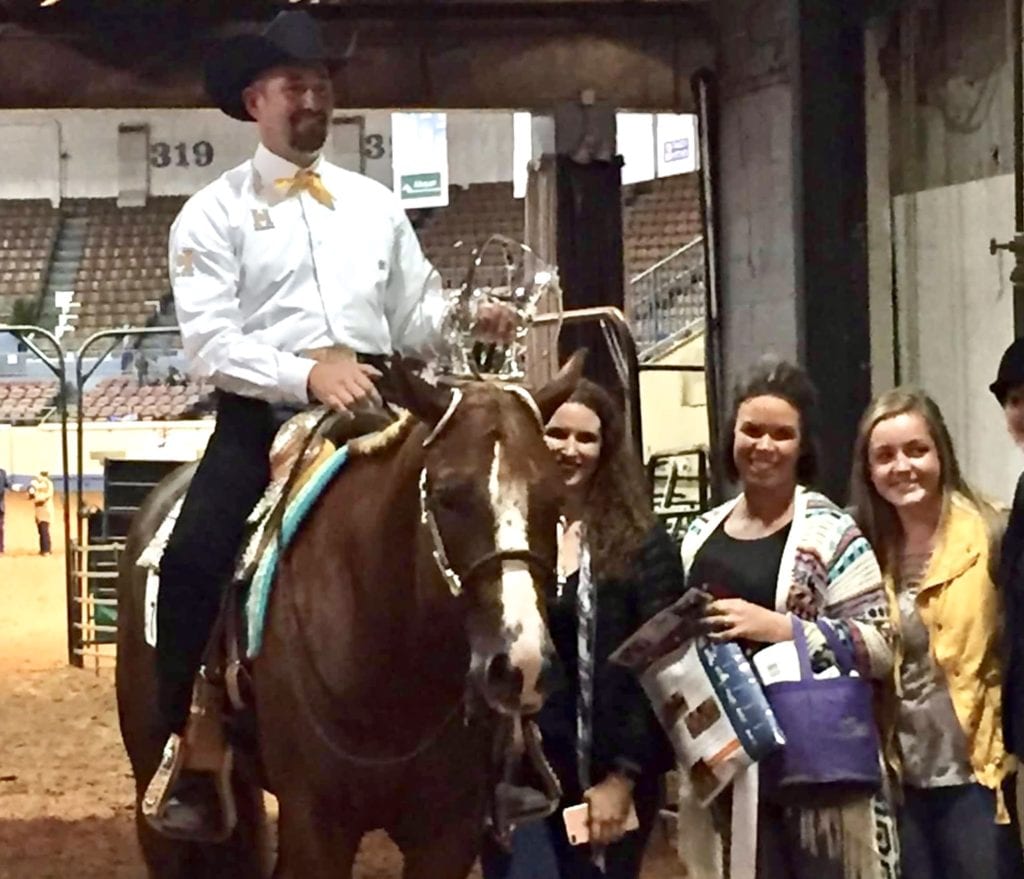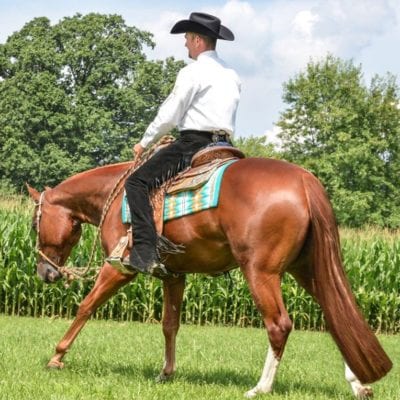Perhaps your daily drive passes a field of yearlings or newly turned two-year-olds, or maybe you have been perusing the internet for your next equine candidate. Narrowing down the choice to just one can often be difficult. Everyone wants to own the next superstar.
In Part Two of our Picking Them Right series (read Part 1 here in case you missed it), we spoke with two of the industry’s top futurity trainers, Casey Willis of Masterson Farms and Brian Baker of Baker Futurity Horses on what they look for when picking a prospect.
Keep it Natural
 Regardless of what discipline you may be looking to invest in a prospect for, both trainers stress when choosing a particular prospect, potential buyers need to look for natural athletic ability.
Regardless of what discipline you may be looking to invest in a prospect for, both trainers stress when choosing a particular prospect, potential buyers need to look for natural athletic ability.
Baker, multiple AQHA Congress and futurity champion, explains, “Of course, most important is athletic ability and movement. The prospect needs to be natural. I want it to carry itself from behind. Some people look at the colt that doesn’t drive that hard on its own and think ‘I can fix this,’ the truth is, you really can’t.”
Willis, head trainer at Masterson Farms from Somerville, Tennessee agrees. “When I look at a field of yearlings, I want to choose the one who will put its head down and lope off. They need to carry themselves naturally, whether they are the first to run in the pasture or the last one in the group.”
Conformation Counts
Both trainers accentuate that analyzing a prospect’s conformation is very important. Baker looks for definition, body and correctness, “I like a colt with short cannons and low, deep hocks. I look for a prospect that is level. I know that this can change throughout the growing process, but I do not choose one that is not level or one that is too downhill. They will be too off-balance to carry a rider.”
Does Size Matter?
 A common misconception is that size matters when choosing a prospect, but both professionals disagree. Willis, who self-admits he is spoiled as he mostly gets to start offsprings of the famous stallion, RL Best Of Sudden, explains, “Bigger is not always better at the beginning. It can add value down the road, but to decide not to start one just because it is smaller is not always a smart choice. Sometimes the smaller, waspy ones are stronger, despite being little.”
A common misconception is that size matters when choosing a prospect, but both professionals disagree. Willis, who self-admits he is spoiled as he mostly gets to start offsprings of the famous stallion, RL Best Of Sudden, explains, “Bigger is not always better at the beginning. It can add value down the road, but to decide not to start one just because it is smaller is not always a smart choice. Sometimes the smaller, waspy ones are stronger, despite being little.”
Presently sitting on a “little rat” as he called it during the interview, Willis continues, “You never really know what you have until you get on them and the weight comes into effect. Like the one I am sitting on right now, he is little, but he is going to be alright. He is waspy and has a lot of self-carriage and rhythm. Sometimes the bigger ones struggle with that.”
Baker concurs, “Size can be deceiving. A colt may look big and strong and have a lot of mass on the ground but not be able to carry someone. Stronger is better, not size, and you don’t know that until you get on their backs. You might get on a smaller one, and it can carry you around for days.”
Mind Games
 While analyzing conformation and judging size and strength are important, so is choosing a prospect with an agreeable mentality. “Breeding often can help with that. Research the stallion and the mare’s temperaments. However, what may not work for me may work for someone else. I may like to take my thumb and poke one in the belly gently to see how the horse reacts to that. It can be a good indicator of what kind of temperament it may have,” says Baker from Sunbury, Ohio.
While analyzing conformation and judging size and strength are important, so is choosing a prospect with an agreeable mentality. “Breeding often can help with that. Research the stallion and the mare’s temperaments. However, what may not work for me may work for someone else. I may like to take my thumb and poke one in the belly gently to see how the horse reacts to that. It can be a good indicator of what kind of temperament it may have,” says Baker from Sunbury, Ohio.
“Some colts are tight and fractious. Some are dull. That’s just how it is. This is where pedigree comes into play. I like to look at the history of the mare for temperament,” explains Willis.
Baker agrees, “Pedigree is important to a certain extent. As a trainer, I know what I get along with and what I don’t. Find something that will work for you, and you will have a good chance of a finished product that you will enjoy and be able to go out and show.”
Make No Mistakes
 So, what are the most common mistakes people make with their prospects? Baker believes in a good initial start, “My advice is that owners should start their prospect as early as they can in training. It is a long process and not everyone understands that. I feel it is necessary to go with the pace of the horse in the training process, not the pace of the owner.”
So, what are the most common mistakes people make with their prospects? Baker believes in a good initial start, “My advice is that owners should start their prospect as early as they can in training. It is a long process and not everyone understands that. I feel it is necessary to go with the pace of the horse in the training process, not the pace of the owner.”
Willis agrees that a professional touch as early as possible is the key to success. “I’ve seen it where owners handle their babies at home then bring them to a trainer. They are often spoiled and have to be retrained. People can easily get barn blind too.”
He stresses that owners need to remain objective and realize their prospect’s abilities and weaknesses. “Some people gamble and wait until their colt is riding around before sending it to a trainer, this can cause all kinds of bad habits.”
“Not every colt will fit every trainer. A good professional will admit that and hopefully have colleagues they can juggle their colts around to make it work for everyone,” Willis concludes.
Photos © Eric Hardesty and Courtsey Promotions
About the author: An AQHA Professional Horseman, Mo West, currently lives in Danville, California. Formerly a high school English teacher for over 15 years, she now pursues her passion. As an assistant trainer at Busick Quarter Horses, she enjoys training and coaching for all around events. She is an avid world traveler and loves boats and the water. Fishing is her second favorite activity, and she always has her beloved dog, Crash at her side whenever possible.









